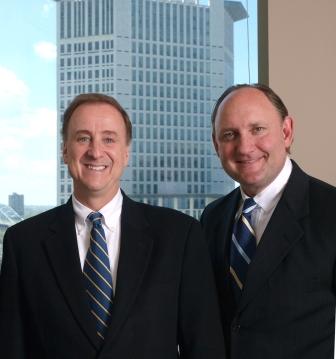What Is Medical Malpractice?
Let’s start with the basics. “Medical malpractice” and “medical negligence” are the same. Under Ohio law, a medical mistake or medical error rises to the level of medical malpractice if you can prove three elements: (1) that a healthcare provider provided medical care that fell below accepted standards of medicine; (2) that an injury resulted from the substandard care; and (3) that the injury would not have occurred if the care had been provided in an acceptable manner. Often, in order to prove the case, certain assumptions have to be made because an injured party cannot perform a scientific experiment to prove with certainty that proper care would have prevented the injury. The law allows recovery if the patient can prove that harm would have “likely” been avoided if proper care had been given.
The three elements of medical malpractice apply to a variety of healthcare-related claims, including hospital negligence, nursing negligence, dental malpractice, podiatric malpractice, and chiropractor malpractice. The rule applies whether the negligent physician is a medical doctor (M.D.) or a doctor of osteopathy (D.O.). The elements also apply to injuries that occur in a nursing home setting, such as nursing home abuse or neglect, though there is a specific statute that applies to nursing home cases.
Medical Malpractice Cases are Difficult to Win
Recent data published by the Ohio Department of Insurance shows that only 23% of medical malpractice lawsuits that go to trial result in a favorable verdict for the patient. You might conclude that lawyers must be filing many frivolous lawsuits to result in such a poor success rate. You would be wrong. In order to file a malpractice case, the lawyer must accompany the complaint with an affidavit of merit signifying that he/she has had the case reviewed by a qualified medical expert who found merit in the claim. More importantly, with the risk and expense associated with malpractice litigation, malpractice lawyers tend to carefully review cases before filing suit in order to ensure that they have the best chance of success. A lawyer who files frivolous lawsuits is a bankrupt lawyer.
Jury Bias
There are a number of factors that cause the low success rate for malpractice claims. The main problem, however, is jury bias. There are a number of well-studied jury biases that work against victims of malpractice at trial. The psychology behind these biases is deep and complicated. It has spawned a cottage industry of trial consultants who try to minimize the impact of jury bias. But, truth be told, no one has a magic bullet for jury bias. Powerful business and insurance interests have manipulated public opinion further by publicizing a “tort crisis” and the need for “tort reform.” These arguments have been soundly debunked. In truth, these commercial interests spend a lot of money skewing public opinion because their profits improve when they are not held accountable for injuries that they cause by harmful conduct.
Medical Malpractice Cases are Expensive
Medical malpractice cases are extremely expensive to pursue. 25 years ago, we would tell clients that the average case will generate $25,000 or so in case expenses. Today, the costs typically range from $75,000 to $125,000. It is not unheard of to spend over $200,000 on a malpractice lawsuit. These costs arise largely due to charges from medical experts who agree to review medical records and, if the case is found to have merit, testify at trial. Case expenses may also include costs to travel to academic centers where many well-credentialed experts practice medicine, court reporter fees, transcript fees, medical records costs, copying costs, trial consultant fees, costs to prepare trial exhibits, and court costs.
How Does This Affect Your Choice of a Medical Malpractice Lawyer?
Victims of catastrophic medical injuries need an attorney who can bring resources to match those of well-heeled insurance companies and businesses. Not only must the lawyer have financial resources to incur the expenses associated with this type of litigation, but they must have a unique background in both medical and legal issues. The attorney must have experience trying complex medical malpractice cases, and an understanding of jury bias, so that your chance of success at trial is optimized. Catastrophic injury cases, such as stroke, brain injury or paralysis, require an attorney with an understanding of economics in order that they can prove the cost of the injury in terms of future medical expenses and loss of earning potential.
What We Can Do For You
Mishkind Kulwicki Law consists of two medical negligence lawyers, Howard D. Mishkind, Esq. and David A. Kulwicki, Esq. We have recovered over $200 Million on behalf of clients throughout the State of Ohio who have suffered injury or wrongful death due to the negligence of another. Together, we have practiced in the field of medical malpractice for over 60 years during which we have tried over 100 lawsuits to verdict. We have represented clients in every major Ohio city as well as many of Ohio’s 88 counties. We provide you with experience and resources that allow you to go toe-to-toe with a well-funded defense team. We limit our practice to several catastrophic cases each year so that we can provide direct, personal service to our clients when they need it most.
